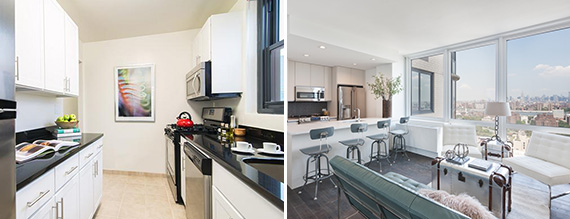Trending
Median rents keep rising — but average rents drop
Potential first-time homebuyers are staying in the rental market and putting upward pressure on prices of small units

In both Manhattan and Brooklyn, median rents continued to climb while average rents fell, according to Douglas Elliman’s December rental report.
In Manhattan, the median rental price rose 5.9 percent to $3,250, while the average fell 1.2 percent to $3,960. In Brooklyn, the median rental price rose 9 percent to $2,900, while the average rent declined 1.3 percent to $3,139.
The trend of rising median prices and lower average prices was the result of tight lending practices that are keeping would-be first-time homebuyers out of the sales market and causing them to crowd the small-unit rental market, according to Jonathan Miller, CEO of appraisal firm Miller Samuel and the author of the Elliman report.
“There’s this organic flow of first-time buyers from the rental market into the purchase market,” Miller said. “What we’ve seen for a number of quarters this year is that because credit remains unusually tight for mortgage lending, people who would normally qualify for homeownership don’t qualify and they get bumped back into the rental market.”
In Manhattan, the median studio rental price of $2,427 is up 4 percent from last year, whereas the median three-bedroom price of $5,745 is down a full 21.4 percent from last year. In Brooklyn, the median studio price of $2,310 is up 15.6 percent from last year, whereas the median price of three-bedrooms rose 8.4 percent to $4,091.
Job growth and an influx of new residents help push rents up, Miller said. “Rents are high, they’re continuing to edge higher, it’s not clear how much more they can rise, but there’s still upward price pressure.” he said.
This pressure is also demonstrated by falling vacancy rates. In Manhattan, vacancy declined to 2.52 percent from 2.79 percent, with the highest vacancy on the East Side at 3.23 percent and the lowest Uptown at 0.71 percent.
A report by Citi Habitats, also released today, noted that in 2014, an average of only 9 percent of leases contained landlord concessions, also signifying a landlord’s market. Just compare that number to 2009, when 52 percent of leases included a concession.




